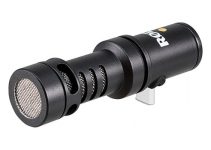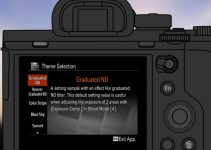Editors spend a lot of time, well, editing. If you are a beginner or amateur you may end up spending a lot more time editing than professionals since you might not know all the tricks and shortcuts to power through your footage.
Those seconds add up. This is why you should constantly be looking for alternative workflows or tips that can make certain aspects of your own workflow run faster or smoother.
Filmmaker Sean Kitching is here to share five of his video editing hacks to help dramatically speed up your own editing. Editing software, such as Adobe Premiere Pro shown here, can be incredibly complex. Anything you can do to get an edge is useful and the tips here are a good start.
1. Learn the Keyboard Shortcuts
Seriously, this one cannot be said enough. If you are serious about editing you have to learn some keyboard shortcuts. Even if it is just the basics you can save so much time switching tools and getting done what you need to get done. At a minimum, start with how to switch from basic cursor, to a blade tool, make a cut, trimming, and similar options.
Here are some basics:
- Add Edit: Ctrl + K
- Ripple Trim Previous/Next: Q/W
- Up/Down Arrows: Clip Shuttling
- Timeline Zoom In/Out: +/-
- Undo: Ctrl + Z
- Select All: Ctrl + A
- Select Individual: Alt + Click
- Duplicate Clip: Alt + Click + Drag
2. Increased Playback Speed
This one is simple, but you can actually adjust playback speed on your timeline using J, K, and L as the shortcuts. If you need to just go through a long clip and add edits for “ums” and other breaks in talking it can help you speed through it.
Double speed is about the max if you are doing audio editing. Though you can use the audio waveforms to find gaps in audio easily.
3. Using Markers
Helpful for editing alongside a music track are markers. These little indicators can be set at important points in the music, such as where a nice shift in speed or when a new instrument kicks in.
It’ll make matching up the video edit a lot easier. Hit M to just quickly add it to the track, as long as the track is selected. If you don’t select a track it’ll do this to the main timeline.
4. Using Colors for Organizing the Timeline
When projects start getting bigger and bigger the timeline can actually become a bit difficult to navigate. One way to get around this is by adjusting the colors of the clips on the timeline. This can help you easily pick out which shots are which and then make adjustments without having to go digging.
One example is to set all your talking head videos to one color while B-roll is set to another color and then slow motion is yet another color. This can continue for a good bit to handle additional complexity. It’ll help later on in the edit, such as when color grading and doing sound editing.
5. Copying and Pasting Attributes
Many instances will have you applying the same types of edits or color grades to multiple clips. For example, all your interviews from one session were shot in the same light and can use the same basic grade to get everything looking similar. To do this, you can start with a single master clip and then copy the attributes and paste them onto your other clips.
Just select your graded clip, hit Ctrl + C, then select all the other clips and hit Ctrl + Alt + V. This will bring up a box to select which attributes you want to apply to all the clips.
This is a great place to start, especially if you are new to NLEs in general. Seriously though, start by learning your shortcuts!
[source: Sean Kitching]
Disclaimer: As an Amazon Associate partner and participant in B&H and Adorama Affiliate programmes, we earn a small comission from each purchase made through the affiliate links listed above at no additional cost to you.
Claim your copy of DAVINCI RESOLVE - SIMPLIFIED COURSE with 50% off! Get Instant Access!





